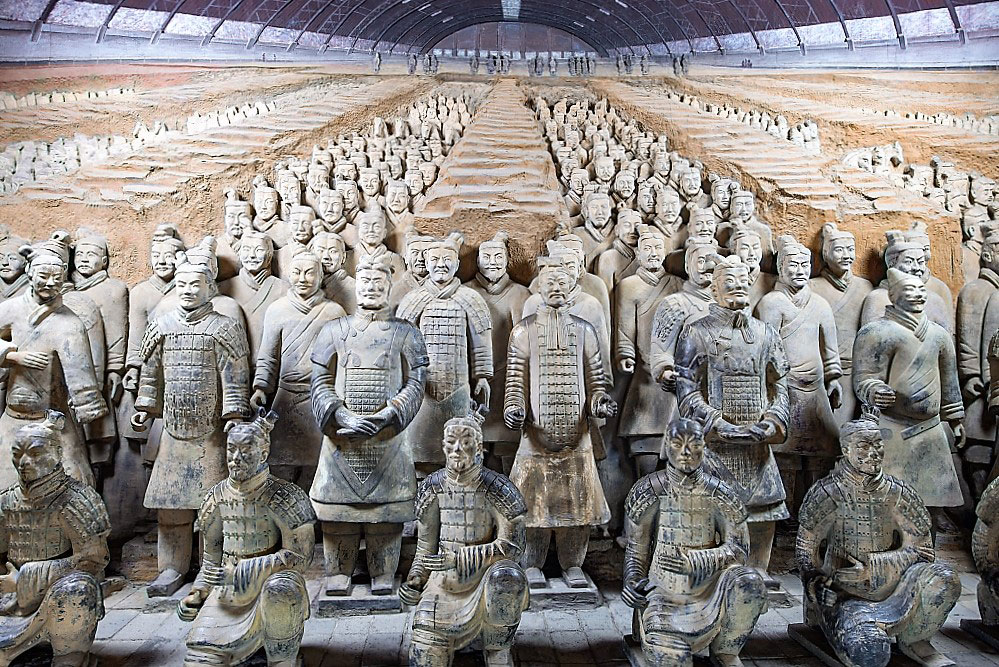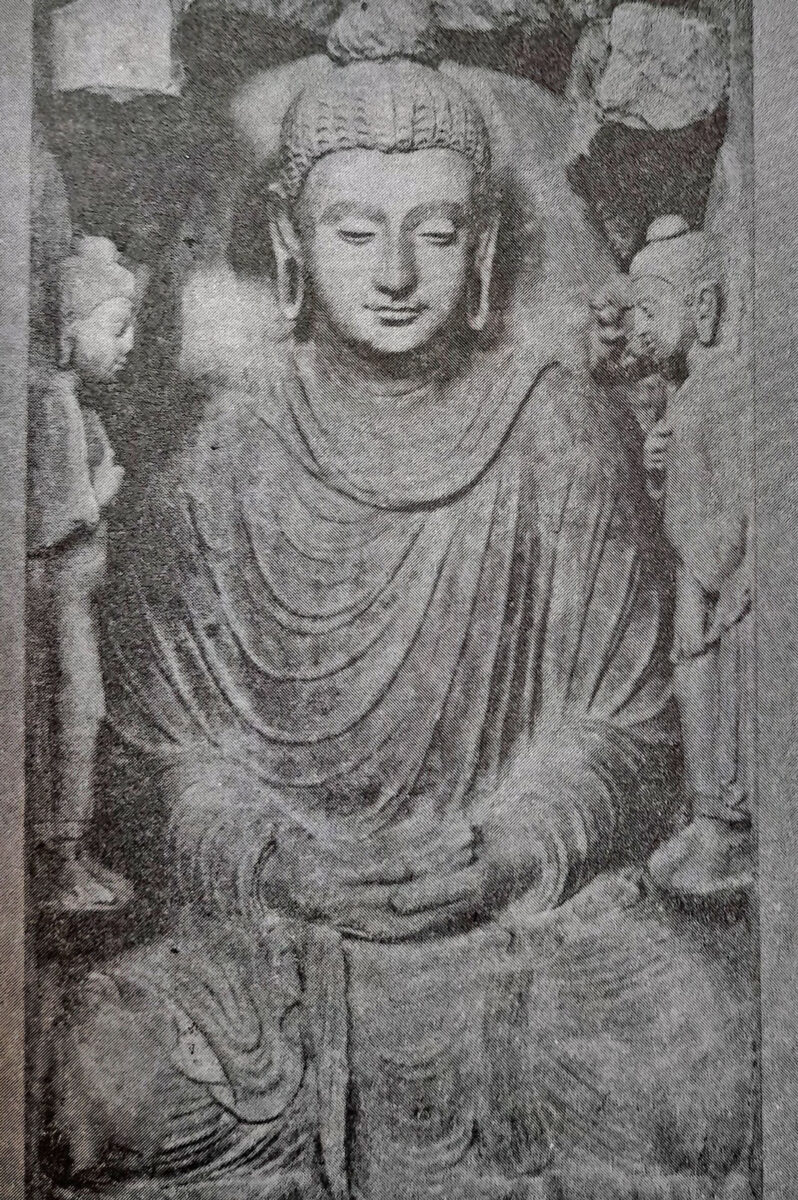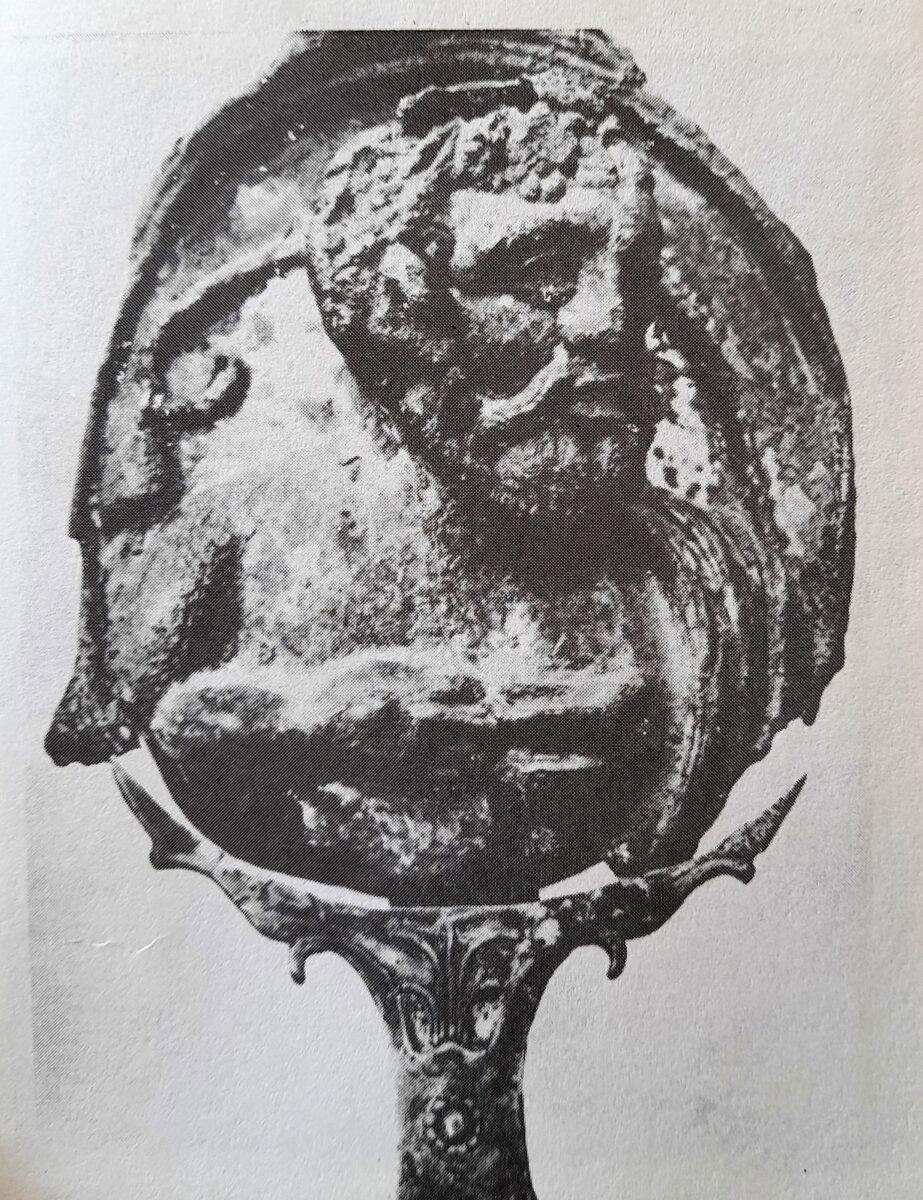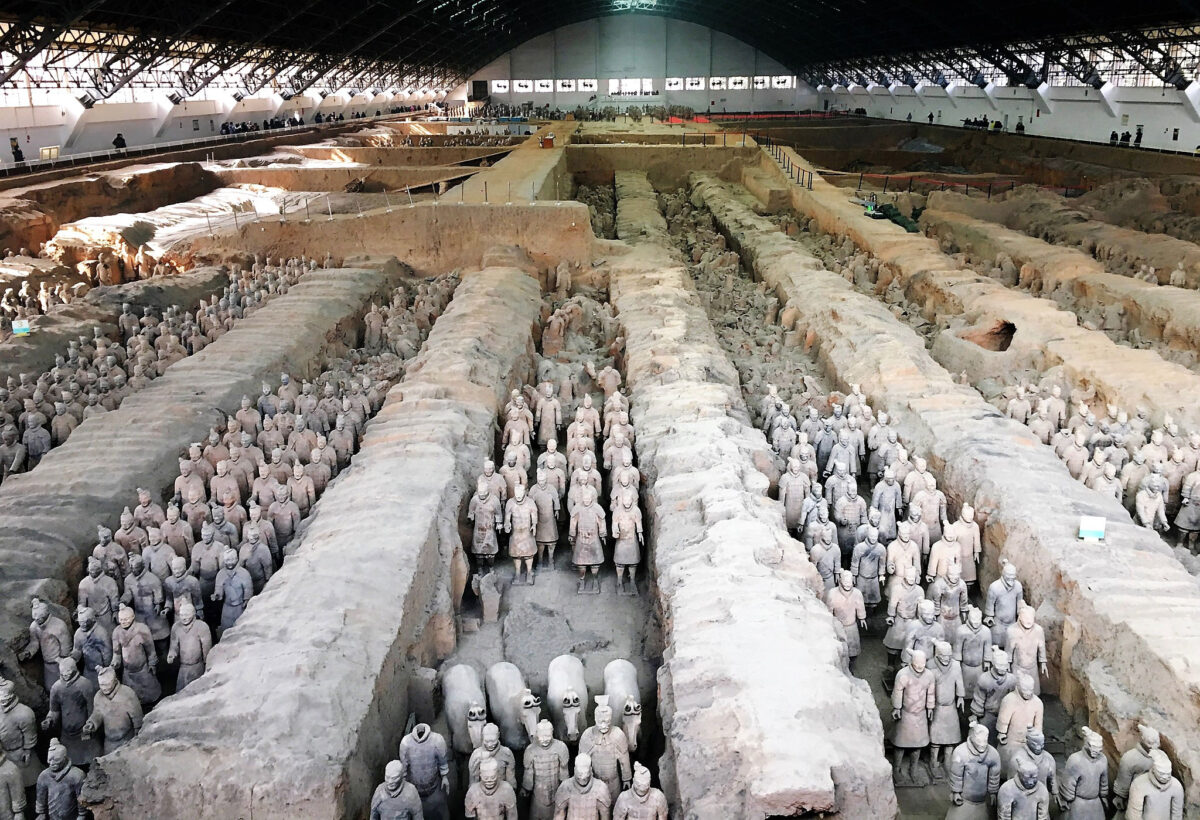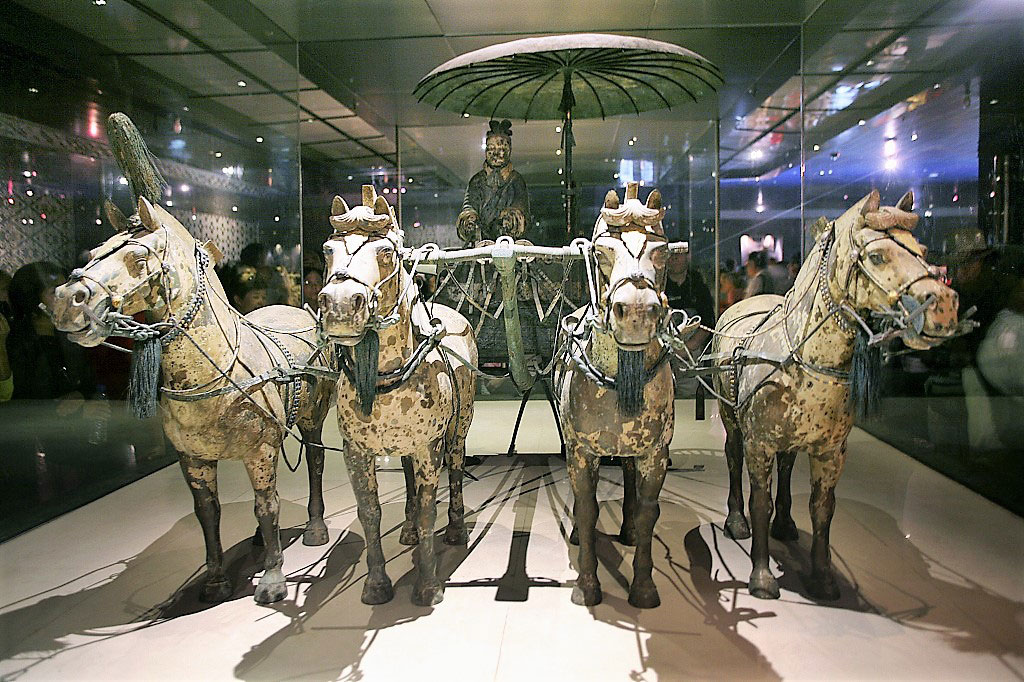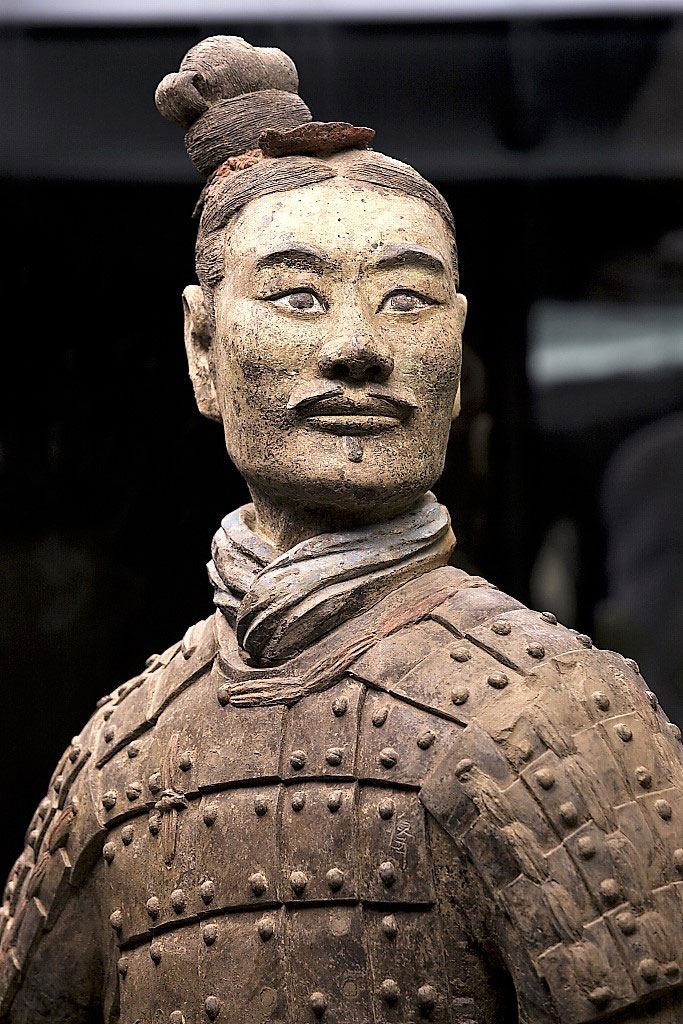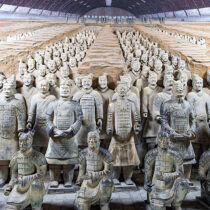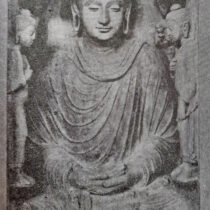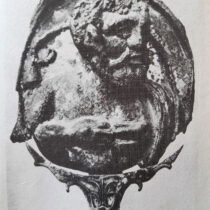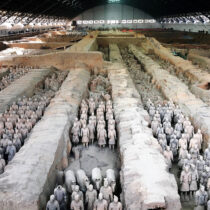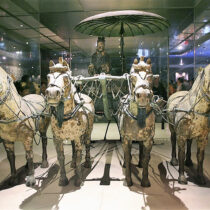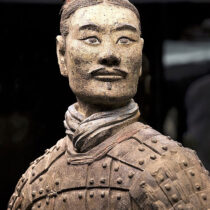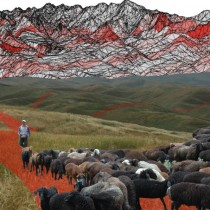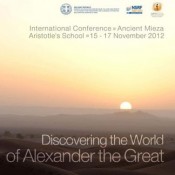This army was not created for the eyes of the living. These soldiers were made to accompany an emperor in his afterlife. Eight thousand terracotta soldiers were “born”, set up in battle formation and buried standing next to their leader to send out the message of timeless might, of eternal power and of human vanity. This army was created two million years ago, it was discovered about half a century ago and only a few years back, the world was informed that its creation there in the heart of Asia had been supervised by Greek sculptors!
…and there are endless soldiers …
The first soldier was unearthed one morning on March 29, 1974, in the desolate Xi΄an Valley in the heart of China where only lotuses and pomegranates grow, when a handful of farmers were digging for water to construct a well. When the pickaxe hit the soil for the umpteenth time, the sound it made was not that of earth receding. It was dry and clear; the sound of breaking clay. The men proceeded carefully. They believed they have come upon a jar with treasure. The find was a treasure! But national. Or rather, global. Split in two by the tip of the pickaxe was a skull of terracotta!
The excavation then set up revealed that the head belonged to the life size model of a soldier. As time went by and the archaeological research progressed to seven meters below the surface and in an ever-increasing area, there was no end of statues! Before the astonished eyes of the archaeologists, one after the other, clay soldiers were unearthed, most of them being 1.80 m high and a few of them as tall as 1.90 m. In the following decades, an extensive excavation in three different chambers brought to light tens of thousands of chariots and bronze weapons, hundreds of life-size models of horses and 8,000 clay soldiers. Just over 5,000 were in remarkably good condition. The rest were in fragments. It would have been a miracle if two millennia had passed without having left their marks… because that is how old the findings are. They belong to the 3rd c. BC; to be precise, some time between 246 and 208 BC. Scholars say however that the crushed terracotta soldiers were not destroyed by time, but by rival dynasties, who invaded the emperor’s mausoleum and destroyed everything they could, before it was swallowed up by the passing centuries…
Let us go back in time …
It is the period of the reign of Zhao Zheng. In 246 BC, at the age of just 13, he was crowned king when he was enthroned by Lü Buwei, a powerful merchant whose concubine was the young man’s mother. Lu himself was regent until Xiao grew up. It sounds strange, to say the least, for a healthy young man, a teenager, to plan for escorts for his …corpse, but Zhao did just that. Long before he became an adult, he gave orders for the construction of these soldiers. And when he grew up, he executed his mother’s lover and unhindered set about fulfilling his dream of becoming emperor. Until 221 BC, through an effective network of espionage and bribes set up by his gifted generals, Zhao manages to eliminate one by one the six rival ethnic groups claiming territories in the region and unite a country under his leadership. He proclaimed himself “Qin Shi Huang” (First Sovereign Emperor), christened his country by his name and boldly declared that his dynasty would last “10,000 generations”.
The states of the central continent considered China a country of barbarians and its emperor as warlike. But the history of China in coming centuries would also paint a rather black picture of its first emperor. With a handful of exceptions, the Chinese will refer to him as inhuman, uncivilized and superstitious. He realized a series of reforms aimed at establishing a fully centralized administration. He abolished fiefdoms, forced wealthy families to live in the capital Xiangyang, and divided the country into 36 military districts, each with its own army and political leader. In addition, he declared constants from the weight and length of carriage axes to the language and legislation of the country.Lastly, he began the construction of a network of roads, canals and fortresses designed as defenses against the barbaric invasions from the north, which eventually formed the Great Wall of China. Qin left behind him a strong administrative structure, on which all subsequent dynasties would be based. As for the Qin Dynasty that boasted it would last for 10,000 generations, it barely outlived the emperor. After his death, in a ruthless war between factions not one of his successors will survive… The throne of the emperor will pass to other hands. He, however, will make sure he is not forgotten. Since he was haunted from a very young age by the agony of death, among his duties were also offerings to the gods for their protection. And naturally at some point he turned to magic and alchemy. He eagerly sought out teachers who would offer him the elixir of immortality. He travelled constantly in search of magicians/wizards who would make him immortal until he was attacked by Confucian scholars. They accused him of charlatanism and thus signed their own death sentence… It is estimated that 460 of them were executed, while their books were thrown into the fire. Only the copies in the emperor’s library survived. The years went by and Qin’s condition worsened. A triple assassination attempt on him prompted his isolation in the huge palaces he had meanwhile built in various parts of the country. In 210 BC. he died during a tour. But he has taken care of his legacy. He knew exactly where he would be laid to rest. For his kingdom in the other world he has chosen the slope of a hill extending over 50 km2! In his already carved tomb, decorated with universal symbols, he would take with him an entire terracotta army; the one he had prepared as a teenager and which would protect him in the afterlife. But making life-size statues is “Greek” to China (corresponding to “Chinese” as meaning anything incomprehensible to Greeks). Sculpture in general, especially in the naturalistic style, is not part of Chinese culture. And what has been found in the centuries following Qin, are only small figurines and these are neither in tombs nor public places.
When Qin “encountered” Alexander the Great
The terracotta soldiers, therefore, are not in the Chinese tradition, but why did the emperor decide to invoke an art almost unknown in China and moreover, how and where did the skills for practicing it come from? Future science will come to the conclusion that this dramatic artistic change is the result of contact with other cultural traditions.
In 2013, in an article on the influence of Hellenistic art on the cultural contribution of the Chinese emperors, Lukas Nickel, Professor of History of East Asian Art at the University of Vienna, noted that “sculpture as an artistic medium was widely used in the arts in Greece and the Hellenistic East, but played a small role in ancient East Asia. This changed significantly with the first Emperor of China, who marked his ascension to the throne in 221 BC by erecting gigantic bronze sculptures outside his palace”.
Scholars note that during the life of the first Emperor, only a few Asian societies used sculpture. In North Asia and Mongolia (with the exception of megaliths with occasional anthropomorphic features), the Korean Peninsula, and the Japanese islands, in Southeast Asia or the Indian subcontinent, sculpture does not appear to be part of the local culture. At this time, only one culturally connected group of states in Asia was making large-scale realistic sculptures for public spaces and tombs: the Hellenistic states of western and central Asia that had emerged after the Alexandrian conquests.
Alexander the Great had certainly left his mark on the wider region a century earlier. In his campaigns he reached the threshold of the “yellow race”; Susa, Issus, Gaugamela, Taxila and even deeper, north of Kashmir, to the outskirts of China, as it would be called later. The Macedonian general managed to sow the seeds of Greek culture. Many centuries later, in the depths of Asia, under the nose of a recognizable Asian civilization, numerous finds are packed into the the display windows of overcrowded museums around and far beyond what was once Babylon. But in them the scholars do not recognize a pure Asian culture. On closer inspection, archaeologists find that coins, silver and bronze utensils and statues were made by Asian and Indian craftsmen, but the designs and techniques are reminiscent of ancient Greece. In the museum of Taxila, the folds of the Buddha’s cloak are “Greek”, one could swear that Bodhisattva is wearing a helmet identical to that of the goddess Athena, Dionysus is depicted on the back of a silver shield, and the necklaces could be also be displayed at the museum of Knossos! History unfolds through the remnants of everyday life. Alexander sowed the seeds and a century after his reign (roughly at the same time as Qin in neighboring China), they were cultivated by the Bactrians. The Greek satrap of Bactria (modern-day Afghanistan) Diodotus I Soter, established his own kingdom in the region. Greek culture was preserved in the area for another hundred years both through the daily lives of citizens and through the ambassadors of Bactria who travelled and developed diplomatic relations with other kingdoms. The state of Bactria will reach absolute prosperity during the reign of Demetrius I, in the mid 2nd c. BC. And then another race, the Parthians, came to occupy Bactria and – according to many historical testimonies – adopted Greek culture at every stage of their lives, establishing in fact the Greek language as a dialect of the palace and the aristocracy of their country now called Parthia.
The Chinese came into contact with the Macedonians in the Fergana Valley, an important section of the northern Silk Road that connected China with Parthia. After the conquests of Alexander the Great, Fergana became part of both the Seleucid and the Bactrian kingdoms. Bactria seems to have played an important role in the evolution of Buddhist statues with Greek characteristics.
Hellenism, then, was active in Asia. Culture, art, letters were experienced, adopted and revived by the next generation. Testimonies regarding it are scattered.There are monuments and statues… Much later excavations brought to light more and more indisputable facts about the passage of Alexander the Great. For centuries it has been speculated that the Pakistani Kalash, Burusho and Pashtun tribes were descendants of the ancient Macedonians. DNA tests do not confirm this, except perhaps for the Pashtuns, whose gene has something in common with the Macedonians.To be of Greek origin is a matter of great pride for these people.
It is now considered certain that at some point Qin “encountered” the archaic kouroi and realistic Hellenistic sculpture and was fascinated perhaps not so much by the precious aesthetics as by the large-scale works, which according to his logic were able to fully conveying his own status. After all, a great leader whose work he was now convinced would continue in the next life, could only be accompanied by an army of convincing, imposing soldiers.
As excavations in Qin’s majestic mausoleum continue, new data is being collected by archaeologists. In 2016, scientists appeared confident that a… Greek hand was involved in the making of China’s clay soldiers, not only confirming but taking Lukas Nickel’s theory one step further, who now clearly states his opinion that there was probably a Greek sculptor in the region who trained the locals!
The clay soldiers are holding bronze weapons, swords, spears, knives and they are lined up in battle formation. The ones in front are kneeling, while the ones at the back are standing. They are followed by individual horses and chariots with their charioteers. In addition to the large army, Qin’s subterranean kingdom is inhabited by waterfowl, made of bronze, and terracotta musicians. The emperor’s clay procession also includes officials and acrobats, slightly smaller than the soldiers. Head of the excavation team, Duan Qingbo, states that the underground chambers that have come to the surface after so many centuries are nothing but an imitation of the organization of the Qin Dynasty. At first, scientists believed that the emperor is accompanied by his army. They now realize that he took an entire administration system with him.
Regarding the soldiers, it is now clear that Qin decided on a mass production approach, almost like cars on an assembly line. That is, he ordered the upper limbs of the bodies to be made first, followed by the heads, to which hair, hats, and mustaches were added separately. The coats and shoes came next and finally the decoration of the soldiers with vivid colours. The faces, however, depict the characteristics of different Chinese races, social anthropologists conclude. It seems that the creation of each of these soldiers, or a small group, was overseen by a specific artist who engraved his signature on the base of the statues he supervised.
